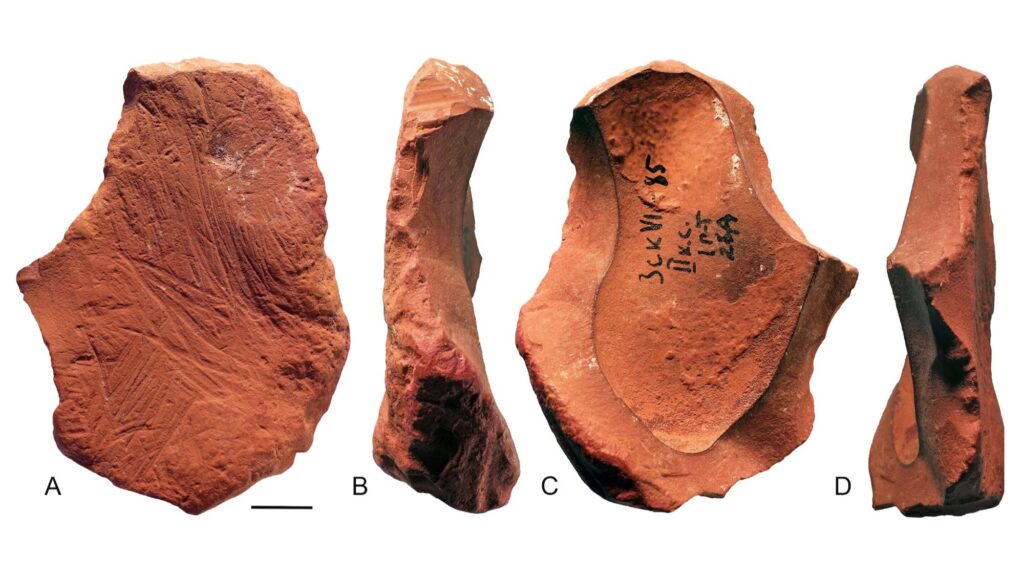
Recent archaeological discoveries reveal that Neanderthals exhibited a surprising level of creativity, challenging long-held perceptions of these ancient humans. A new study published in the journal Science Advances indicates that Neanderthals may have used tools crafted from ochre, a naturally occurring pigment, for artistic purposes.
The research team, led by Francesco d’Errico from the University of Bordeaux, explored multiple sites in Crimea and Ukraine known for their rich troves of Neanderthal artifacts. Their findings included 16 pieces of ochre that date back as far as 70,000 years. Ochre, an iron-rich mineral, has been used throughout history for various purposes, including artwork and the tanning of animal hides.
Upon examination using scanning electron microscopes and portable X-ray scanners, many of the ochre fragments displayed signs of use, such as polished and sharpened surfaces. Notably, one piece of yellow ochre was shaped into a crayon-like object, suggesting it was intentionally crafted for drawing. The research indicated that the tip of the ochre had been resharpened multiple times, implying it was reused rather than discarded.
The authors of the study stated, “While practical applications (e.g., hide processing) remain plausible for other specimens, the evidence supports symbolic use among some Crimean Neanderthals.” They concluded that these ochre materials were likely involved in symbolic activities, indicating a shared cultural practice with contemporary Homo sapiens.
This discovery opens up new avenues for understanding the cognitive abilities of Neanderthals. The ability to create and utilize tools for artistic expression suggests a level of symbolic thinking that was once thought to be exclusive to early modern humans.
Despite the potential for artistic engagement, it is important to note that the evolutionary journey of Neanderthals and early humans diverged significantly. While both groups may have shared similar cultural practices, only modern humans have persisted through the ages, enjoying the creative expressions that continue today.
This research not only enriches our understanding of Neanderthal life but also emphasizes the complexity of human evolution. As scientists continue to uncover the artistic capabilities of our ancient relatives, the narrative surrounding Neanderthals is evolving, presenting them as more than mere competitors in the early human landscape.







